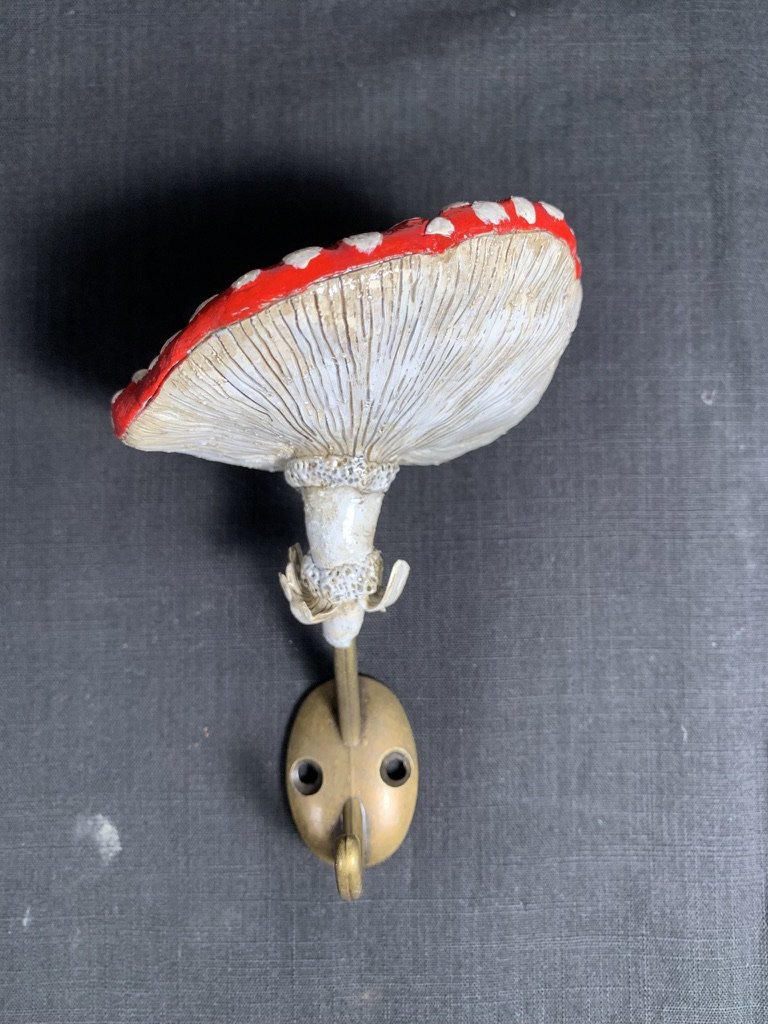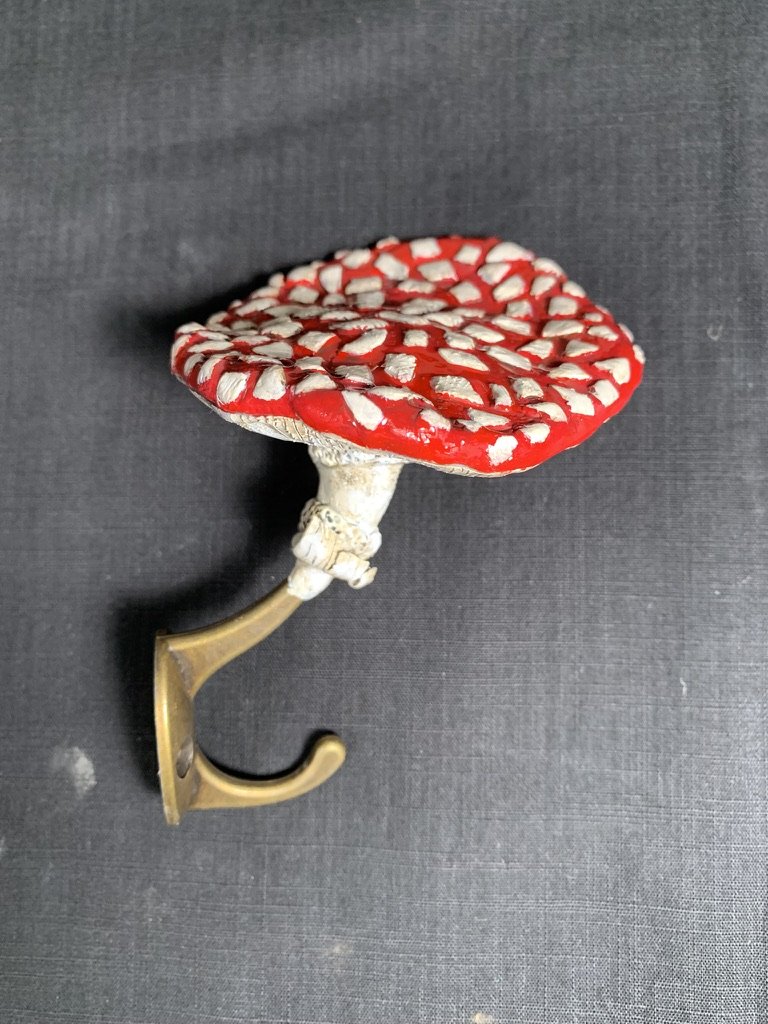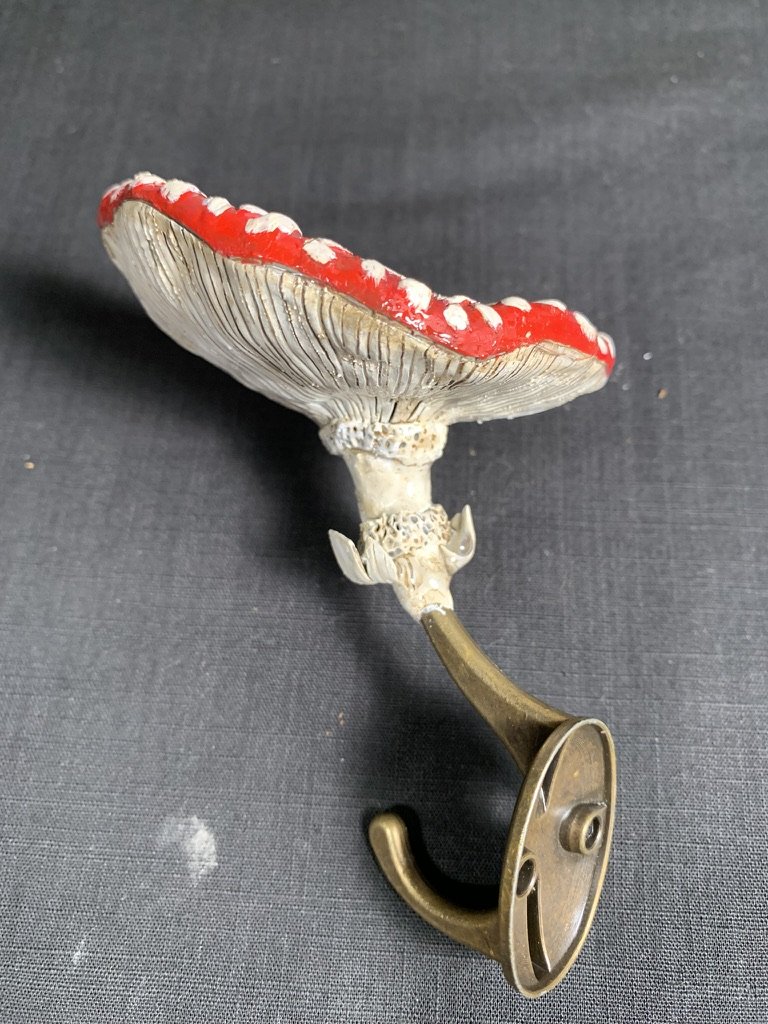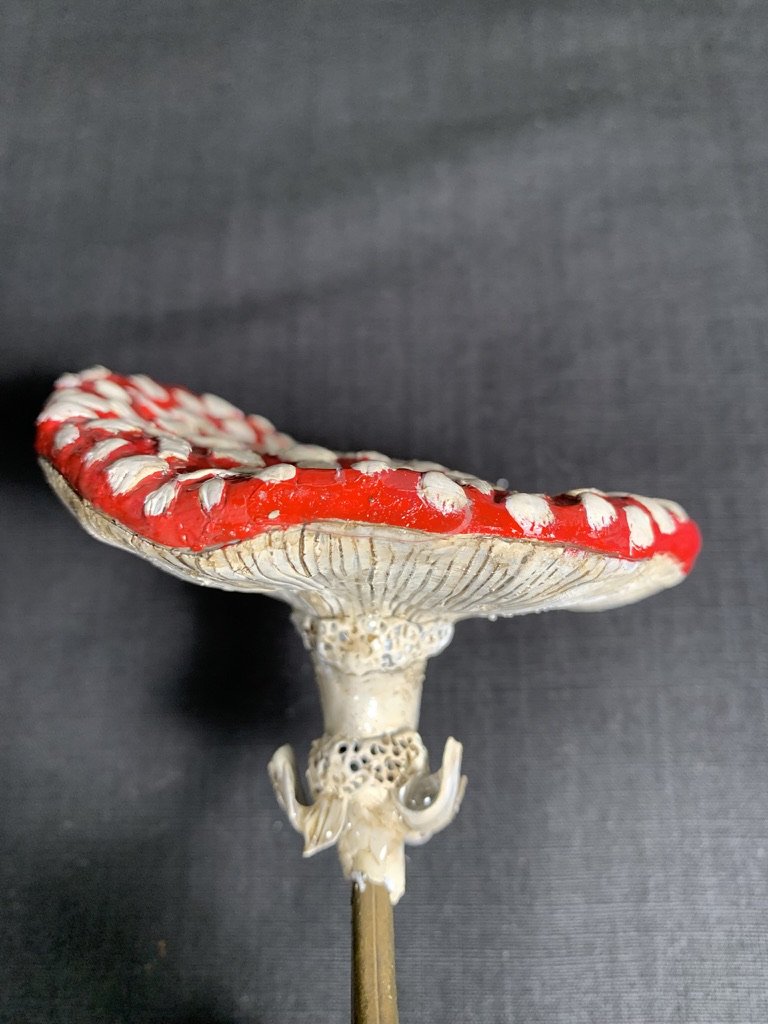 Image 1 of 5
Image 1 of 5

 Image 2 of 5
Image 2 of 5

 Image 3 of 5
Image 3 of 5

 Image 4 of 5
Image 4 of 5

 Image 5 of 5
Image 5 of 5






Amanita muscaria Muscaria Wall Hook
Amanita muscaria
or “Fly Agaric”
Poisonous
Regions: Europe and Asia
Amanita muscaria is perhaps the most ubiquitous of the poisonous mushroom varieties. Information about it was first reported by Albert Magnus, who wrote in De vegtabilibus that “it is called the fly mushroom because it is powdered in milk to kill flies.” There is some debate that the it might have had a different connotation because “fly” was used as a term that referred to people who are considered insane at the time, and the mushroom is known to be a neurotoxin.
In parts of Siberia, indigenous people, namely shamans, would consume amanitas to help them achieve a trance for religious ceremonies (though it was also used recreationally). In eastern Siberia, after a shaman partook of the fungus, others would consume the shaman’s urine, which may have been more potent after the shaman’s body acted as a filtration system. It is also said that the reindeer would follow those under the mushroom’s influence, and eat their urine that would be relieved into the snow, so that they too could enjoy it’s hallucinatory effects.
This one-of-a-kind, handmade mushroom hook will add a dash of whimsy and cottagecore vibes to any home. Each mushroom is lovingly crafted by hand, and coated in a thin layer of resin to protect the paint, prevent yellowing, and strengthen the polymer clay to lessen the chance of breakage.
Materials: Aluminum, metal, polymer clay, acrylic paint, and UV resin.
Please allow 7-10 business days for item(s) to ship.
Amanita muscaria
or “Fly Agaric”
Poisonous
Regions: Europe and Asia
Amanita muscaria is perhaps the most ubiquitous of the poisonous mushroom varieties. Information about it was first reported by Albert Magnus, who wrote in De vegtabilibus that “it is called the fly mushroom because it is powdered in milk to kill flies.” There is some debate that the it might have had a different connotation because “fly” was used as a term that referred to people who are considered insane at the time, and the mushroom is known to be a neurotoxin.
In parts of Siberia, indigenous people, namely shamans, would consume amanitas to help them achieve a trance for religious ceremonies (though it was also used recreationally). In eastern Siberia, after a shaman partook of the fungus, others would consume the shaman’s urine, which may have been more potent after the shaman’s body acted as a filtration system. It is also said that the reindeer would follow those under the mushroom’s influence, and eat their urine that would be relieved into the snow, so that they too could enjoy it’s hallucinatory effects.
This one-of-a-kind, handmade mushroom hook will add a dash of whimsy and cottagecore vibes to any home. Each mushroom is lovingly crafted by hand, and coated in a thin layer of resin to protect the paint, prevent yellowing, and strengthen the polymer clay to lessen the chance of breakage.
Materials: Aluminum, metal, polymer clay, acrylic paint, and UV resin.
Please allow 7-10 business days for item(s) to ship.